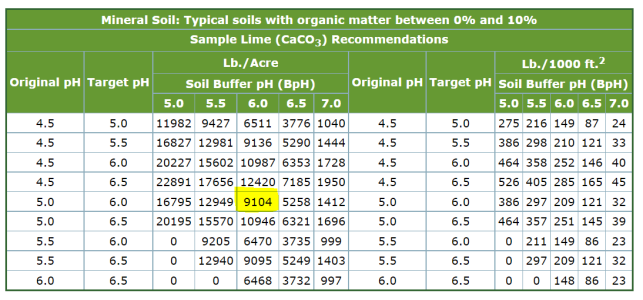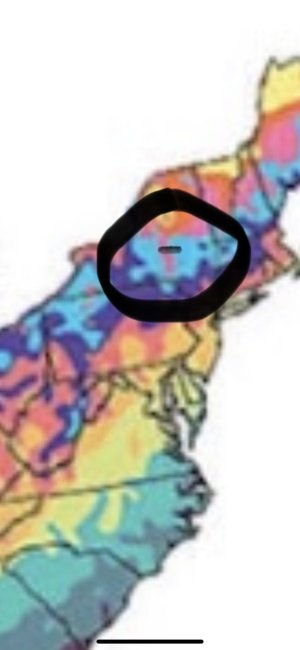When my hair was brown and my energy level was high - back when I was making soil amendment recommendations for the producers who frequented the coop I managed I'd look at their soil test results, I'd look them in the eye and ask two questions. What do expect from this crop and how fat is your wallet?
Expectations run high and if they are to be accomplished it might take some time to get you soil conditioned to meet those expectations. And, it takes a fat wallet to get there, usually.
Amending soil is an investment. Get you pH right and with a little maintenance it provides wonderful returns. Hint: pH doesn't need to be much out of the upper 5's and into the low 6s for what we do. P & K hold in the soil. Medium levels are adequate. High and Very High levels are for the future and might provide some benefit now in crappy conditions. Two years ago if we knew then what we know now we'd have been putting the P&K down like a carpet.
To you situation, Trees - pay those recommendations no mind. They assume an answer to the questions I asked above.
The sample named "food plots?" What do you expect and how deep is your wallet. Every thing I see in the test result is adequate. If you're on a budget I'd say seed it and stand back. If you want to spend some money to help yourself now and provided some future nutrients some amount of MAP or DAP would be helpful. DAP is diammonium phosphate 18-46-0. You get some nitrogen and phosphorous. No potash. You don't need it. If you did 100lb per acre your basic N would be provided for what you want to plant and you get a good boost in P. Or, since your P level is medium you could just choose a nitrogen fertilizer. See, there are no hard and fast answers. There are multiple plans to do the same thing. Some are quick and expensive other slower and cheaper at least from a per application point of view.
Lime? A ton to the acre. A ton in the spring and a ton in the fall. Or a ton a year apart. You can get all enthusiastic and do two tons, but, frankly, I don't think you get much benefit over one ton per application. We could talk lime all day, but not here. So, again, plenty of choices.
Then if you want to get real fancy add some sulfur and boron. Ammonium sulfate fertilizer will help with S. I hear guys use Borax for the boron part. You can buy elemental boron to mix with your fertilizer.
So, now you're scratching your head about what to do. What do you expect and how much do you want to spend?
The wood sample? I was never much concerned with what the soils were like for tree planting. I'm sure many will beg to differ. I do think the hole you dig and what kind of medium you put in the hole is important - much more important than the fertility level of the soils around it.


